Headlines and events archive
Displaying 101 - 150 of 1946
You may also find an archive of news published in the media which are related with the Instituto de Astrofísica de Andalucía - CSIC.
Pages

|
30/09/2024 - 13:00
High-Resolution Study of Blazar TXS 2013+370 and BEAM: A Space Technology and Research Student Team The talk will focus on two key areas. Part one will present the high-resolution imaging of Blazar TXS 2013+370, a study conducted as part of an M.Sc. thesis. This research aims to resolve the inner jet structure of the compact radio source TXS 2013+370 in total intensity and polarization. This analysis utilizes VLBA data combined with Effelsberg observations at frequencies of 22 GHz, 43 GHz, and 86 GHz. Part two will highlight BEAM, a student... Giorgos Michailidis |

|
20/06/2024 - 12:00
Mujer en la Ingeniería: Avances y Retos En esta conferencia presentaremos, en primer lugar, una panorámica de la situación actual de la mujer en las STEM y en particular en la ingeniería, tratando de analizar qué factores pueden tener una mayor influencia en la situación actual. A continuación trataremos brevemente la educación de la mujer en los dos últimos siglos. Destacaremos el hecho de como las formas de educar a la mujer están directamente relacionadas con el trabajo que... Dr. Laura Roa |
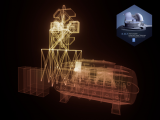
|
05/06/2024
ANDES instrument for the European Giant Telescope ELT is agreed upon The Instituto de Astrofísica de Andalucía (IAA-CSIC) participates in both its technological development and its scientific objectives. |

|
27/06/2024 - 12:30
Multiple components in the protostellar system HH 212: Infalling envelope, nested shell, MHD disk winds, and free wind gas I will present the Atacama Large Millimeter/submillimeter Array Band 7 observations at ~24 au spatial resolution of the CO (J=3-2) and H13CO molecular lines emission of the protostellar system HH 212 and compare them with the emission of the SiO (J=8-7) and SO (J=8-7) molecular lines. From the large to small scale, previous observations have detected the infalling envelope, CO outflow shell, SO disk wind, SiO expanding shell and jet in the... Dr. Alejandro López-Vázquez |
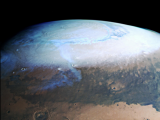
|
28/05/2024
It snows more on Mars than expected Researchers from IAA-CSIC lead a new method to measure carbon dioxide snow and frost variations on Mars surface. The initial results indicate that the deposited snow thickness is up to two orders of magnitude greater than estimated. |

|
25/06/2024 - 11:00
Intersexionality, a key work for diversity? Since we are children we have been taught what we are and we learn how to fit into a set of infinite boxes. Each of these boxes defines us and, at the same time, can be used to discriminate against us, in life and at work. Diversity exists and it could be an advantage for our society. As scientists we should understand how to take care of diversity and use it to improve our work and life quality. One of the main problems in the past has been... Dr. Eleonora Fiorellino |

|
15/05/2024
Earth-type planet found in an ultra-cool dwarf star IAA-CSIC researchers participate in the discovery of one of the few known planetary systems in this type of stars The results, published today in Nature Astronomy, have been contributed by the Sierra Nevada and Calar Alto observatories |
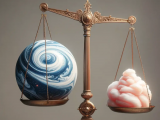
|
14/05/2024
Giant planet as light as cotton candy discovered The Instituto de Astrofísica de Andalucía (IAA-CSIC) is co-leading the study of the second lightest planet discovered to date. |

|
06/06/2024 - 12:30
A complex network perspective on Delta Scuti stars We apply horizontal visibility graphs (HVG) to study the complex network behavior for the delta Sct stars’ light curves observed by TESS. The delta Sct stars are pulsating stars with spectral types A0-F5 and intermediate masses between low-mass stars (≤ 1 Msun) and high-mass stars (≥ 2 Msun). They pulsate in low-order pressure modes and have dominant pulsation frequencies in the 5-80 d−1 range. The high amplitude delta Sct stars (called HADS),... Dr. Elham Ziaali |
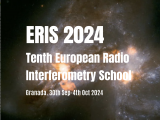
|
30/09/2024 - 04/10/2024
https://www.granadacongresos.com/eris2024 Granada |

|
23/04/2024 - 18/06/2024
https://indico.iaa.csic.es/event/15/ Granada |
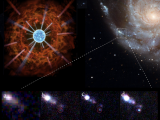
|
27/03/2024
Newly collapsed red supergiant star spotted Explosion of a supergiant star detected just one hour after its collapse. Amateur observatories have been key in detecting the supernova in its initial phases. The IAA-CSIC participates in this study published in Nature through its global network of robotic telescopes BOOTES. |
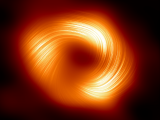
|
27/03/2024
Astronomers Unveil Strong Magnetic Fields Spiraling at the Edge of Milky Way’s Central Black Hole A new image from the Event Horizon Telescope (EHT) collaboration has uncovered strong and organized magnetic fields spiraling from the edge of the supermassive black hole Sagittarius A* (Sgr A*). |
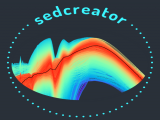
|
17/06/2024 - 18/06/2024
https://indico.iaa.csic.es/event/10/ Granada |
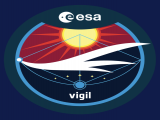
|
12/03/2024 - 15/03/2024
https://form.jotform.com/240521968228359 Granada |
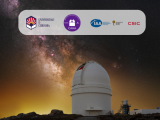
|
04/03/2024
Calar Alto, CSIC, and the University of Córdoba agree to collaborate in the field of astronomy The Hispanic Astronomical Center in Andalusia (CAHA), the Spanish Higher Council for Scientific Research (CSIC), and the University of Córdoba (UCO) have signed an action protocol to develop educational and scientific-technological activities in the field of astronomy. Calar Alto has already signed four collaboration agreements with Andalusian public universities. |

|
11/07/2024 - 12:30
Dust in protoplanetary disks, (still) that great unknown Planetary systems are a side effect in the formation of a star. Planets are believed to be just simply the last remaining of dusty circumstellar disks which is formed around the protostar at very early stages. Thus, understanding how planets are formed requires to understand how dust evolve in these disks. It is less than ten years that we have the possibility of mapping the dust distribution in protoplanetary disks with great detail with... Carlos Carrasco González |

|
14/05/2024 - 12:30
New possibilities for atmospheric analysis with Monte Carlo In recent years, significant advancements have been made in scientific computing utilizing the Monte Carlo method, particularly at the intersection of two key communities: the heat transfer community and the computer graphics community. The first breakthrough is that the computation time required to solve radiative transfer becomes invariant, whether the ground is described by a single building or thousands of them, whether the 3D clouds are... Dr. Yannis Inouk Nyffenegger Péré |

|
30/04/2024 - 12:30
The art of astrophysical measurements: An elementary lecture on photon counting and S/N Have you ever dared to understand how many photons are detected by your camera when you are pointing the telescope to the sky? Is the action of the spectrograph fully understood when analyzing those photons? Do typical image formation rules hold when studying the polarization of light? All these are a few examples of questions addressed by researchers when designing instruments, which are later constrained by technological capabilities. This... Dr. José Carlos del Toro Iniesta |

|
11/04/2024 - 12:30
LP791-18d as a case study for outgassing rocky exoplanets Over the past three decades, the discovery of over five thousand exoplanets has opened avenues for atmospheric characterization, now feasible for a select subset through spectroscopic observations paired with Bayesian inference techniques. These exoplanetary atmospheres serve as crucial windows into planetary formation and evolutionary histories. Achieving accurate interpretations demands a comprehensive approach, advancing theory and modeling... Dr. Leonardos Gkouvelis |

|
04/04/2024 - 12:30
The Earthbound Fate of Meteor Phenomena Understanding meteor phenomena is essential for promptly and effectively recovering meteorites, predicting meteor showers, studying atmospheric properties, and assessing the threat posed by space objects to both in-orbit and ground-based infrastructure. By observing and interpreting meteor phenomena, we can predict impact consequences and efficiently locate and identify surviving meteorite fragments on the ground. Through dimensional analysis,... Dr. Maria Gritsevich |
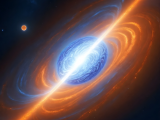
|
21/02/2024
First observation of the formation of 'rare earths' following the merger of two neutron stars A study involving the Instituto de Astrofísica de Andalucía (IAA-CSIC) shows a kilonova as a source of heavy elements, including the precious 'rare earths'. The work, published in Nature, highlights this type of explosive and extremely energetic phenomena as the ideal environment for the formation of metals heavier than iron and silver. |
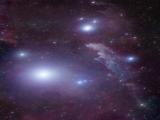
|
04/03/2024 - 05/03/2024
https://indico.iaa.csic.es/event/14/ Granada |

|
25/04/2024 - 12:30
Artificial Intelligence in Service of Galaxy Evolution Research: A Personal Journey In this seminar, I will present my personal exploration of the application of artificial intelligence in the study of galaxy evolution. Since the early 2010s, the fields of machine learning and deep learning have undergone unprecedented development, marked by enhancements in algorithms and hardware advancements. This progress has significantly influenced various scientific domains. Concurrently, the increasing volume and complexity of data... Dr. Ginés Martínez Solaeche |
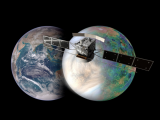
|
06/02/2024
The European Space Agency approves construction of EnVision, the next major mission to Venus The Instituto de Astrofísica de Andalucía (IAA-CSIC) participates in both its technological development and its scientific return. The mission will study Venus's core and atmosphere to understand its volcanic activity and climate and find out how this twin of Earth became so inhospitable. |
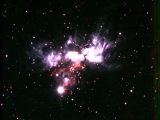
|
29/01/2024
The AFGL 5180 region, cradle of giant forming stars, reveals its secrets in the infrared The Instituto de Astrofísica de Andalucía (IAA-CSIC) leads a study that reveals, in unprecedented detail, a region of massive star formation |

|
27/02/2024 - 12:30
Unraveling the Gamma-ray emission in radiogalaxies and their jets Radio-galaxies are a minority among all extragalactic sources detected in gamma-rays, yet they have excellent potential to study particle acceleration and non-thermal emission in AGN jets. In contrast with blazars, which have jets aligned with the line-of-sight, radio-galaxies have a smaller Doppler boosting factors. The implications are important: First, the distance at which they are detectable in gamma-rays is smaller. Second, the thermal... Mireia Nievas Rosillo |

|
24/01/2024 - 24/01/2024
https://www.iaa.csic.es/meetings/cosmic-dust-workshop Granada |

|
21/05/2024 - 12:30
Coloquio SO: Spectroscopy's Role in Stellar Astrophysics To characterize a star, the stellar fundamental parameters such as mass, radius, metal abundance, and effective temperature should be known. Direct measurements of these parameters, especially for single stars, are quite challenging, and indirect methods are often employed to obtain these characteristics. The most effective method for determining these parameters is spectroscopy, which is an analysis technique of spectra. It allows us to... Dr. Filiz Kahraman Aliçavuş |

|
09/04/2024 - 12:30
Laboratory Research on the Atmospheric Impact of Spacecraft Re-entry Debris: Perspectives and Future Challenges The rapid growth of space debris, especially in Low Earth Orbit (LEO), poses a rising risk to both space operations and Earth's atmosphere. Debris fragments, even minuscule in size, can cause significant damage due to their high orbital speeds. To mitigate risks, controlled re-entry of debris is common practice, but this introduces a new concern: the increasing mass of human-made materials injected into the atmosphere. As satellites and rocket... Dr. Antonio Ocaña |

|
07/03/2024 - 12:30
SO colloquium: Stars and their close-by planets: clues of magnetic interactions Stars interact with their close-in planets through the gravitational and magnetic fields and with their radiation. After a general introduction to those interactions, I shall review some observational clues of magnetic star-planet interactions considering data obtained in the optical, X-ray, and radio domains. Based on a stellar force-free coronal field or the excitation of Alfven waves by an orbiting planet, some analytical models will be... Dr. Antonino Francesco Lanza |

|
21/03/2024 - 12:30
The Local Volume Mapper, state of the art The LVM, one of the three surveys that conform the SDSS-V project, is the first Integral Field Spectroscopy survey of the Local Group, including and unique mapping of the Milky Way. It started survey operations in October 2023, with some early science observations on cheery-peaked targets, and the first observations on the foreseen survey itself. I present here the status of the survey, including the state of the major contributions from the IA... Dr. Sebastián Sánchez |

|
14/03/2024 - 12:30
SO Colloquium: Spatially resolved spectroscopy properties of low-redshift galaxies We summarize here some of the results reviewed recently by Sanchez (2020) and Sanchez et al. (2021) comprising the advances in the comprehension of galaxies in the nearby universe based on integral field spectroscopic galaxy surveys. We review our current knowledge of the spatially resolved spectroscopic properties of low-redshift star-forming galaxies (and their retired counterparts) using results from the most recent optical integral field... Dr. Sebastián Sánchez |

|
19/02/2024 - 23/02/2024
https://indico.iaa.csic.es/event/11/ Granada |
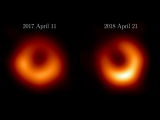
|
18/01/2024
M87* One Year Later: Proof of a persistent black hole shadow The Instituto de Astrofísica de Andalucía (IAA-CSIC) participates in the international collaboration that confirms the existence of a bright ring corresponding to the shadow of the black hole in the Messier 87 galaxy. The stability of the diameter of the ring with respect to the data obtained in 2017 supports the conclusion that the black hole M87 is correctly described by the theory of general relativity. |
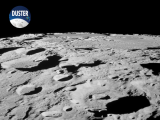
|
15/01/2024
Project DUSTER: a study of lunar dust in preparation for future exploration missions As space agencies prepare to return to the Moon, scientific and engineering teams face the challenge of mitigating a major environmental risk: dust The Institute of Astrophysics of Andalusia (IAA-CSIC) participates in the DUSTER project, which will study charged dust particles, which pose a serious risk to the health of human explorers and space instruments |

|
19/03/2024 - 16:30
Recent Progress in Understanding Solar Flare Magnetism using Data-Driven Simulations and Statistical Analysis of Vector Magnetic Fields Continuous vector magnetic-field measurements by the Helioseismic and Magnetic Imager (HMI) onboard the Solar Dynamics Observatory (SDO) allowed us to run data-driven simulations of solar eruptions and perform statistical studies of magnetic-fields for many flares. In this talk I will review new aspects of flare magnetism discovered using SDO data, including progress in data-driven simulations and statistical studies of magnetic-reconnection... Dr. María Kazachenko |

|
07/05/2024 - 12:30
Journey into the Galactic Heart: Illuminating the Enigma of the Nuclear Star Cluster and the Nuclear Stellar Disc. The innermost regions of most galaxies are characterised by the presence of extremely dense nuclear star clusters, which sometimes appear together with larger stellar structures known as nuclear stellar discs. Understanding the relation between nuclear star clusters and nuclear stellar discs is challenging due to the large distance towards other galaxies which limits their analysis to integrated light. In this context, the Milky Way’s centre,... Francisco Nogueras Lara |

|
08/02/2024 - 12:30
The Transient High-Energy Sky and Early Universe Surveyor (THESEUS) The Transient HIgh-Energy Sky and Early Universe Surveyor (THESEUS) is a mission concept developed by a large European collaboration under study by ESA since 2018 and currently one of the three candidate M7 mission for a launch in mid '30s. THESEUS aims at fully exploiting Gamma-Ray Bursts for investigating the early Universe and as key phenomena for multi-messenger astrophysics. By providing an unprecedented combination of X-/gamma-ray... Dr. Lorenzo Amati |
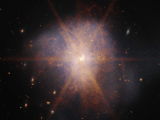
|
08/01/2024
Galaxies caught in the throes of chemical 'rejuvenation' An IAA-CSIC team leads a pioneering study that reveals the crucial role of galactic mergers in the chemical evolution of Ultraluminous Infrared Galaxies. |
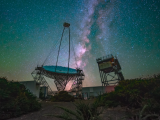
|
26/12/2023
Detected the most distant AGN observed to date at very high energies The detection has been made by the LST-1, the first LST telescope of the CTAO Observatory. The Instituto de Astrofísica de Andalucía (IAA-CSIC) is participating in the observations and data analysis. |

|
18/01/2024 - 12:30
A Year Beyond the Horizon: Advancing Our Understanding of M87* with New EHT Observations. In this presentation, we introduce the first follow-up Event Horizon Telescope (EHT) observations of M87*, taken a year after the epoch-making first image. The enhanced imaging, facilitated by additional antennas, increased data rates, and new imaging techniques, not only provides greater detail but also enables us to study the dynamics of the black hole within a year. Due to the embargo, specific results are not included in this abstract, but... IAA-CSIC EHT group |

|
03/10/2024 - 12:30
SO Colloquium: The next generation of milliarcsecond surveys with SKA-VLBI Very Long Baseline Interferometry (VLBI), using both SKA-Low and SKA-Mid, is poised to deliver groundbreaking observations with milliarcsecond resolution, surpassing the capabilities of the standard SKA array. VLBI in conjunction with the SKA holds the promise of unlocking profound insights across various astrophysical topics and science working groups. VLBI with the SKA stands to revolutionise our understanding of galaxy evolution and the... Dr. Jack Radcliffe |

|
15/04/2024 - 12:30
Astronomy with Neutrino Telescopes In recent decades, high-energy neutrinos of astrophysical origin have become integral members of the multi-messenger astronomy community. Neutrino telescopes have a very particular way to observe the sky, with characteristics different from any other telescope. They are capable of continuously observing the entire sky simultaneously, yet they also necessitate the accumulation of a significant amount of statistical data. IceCube reported the... Agustín Sánchez Losa |
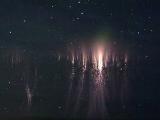
|
12/12/2023
The origin of ghosts, a type of atmospheric transient luminous event, revealed Ghosts (or GHOSTs) are part of a family of events that, although related to thunderstorms, occur in the mesosphere, tens of kilometres above the clouds. The Institute of Astrophysics of Andalusia (IAA-CSIC) leads the first spectroscopic study of these infrequent and brief phenomena, which associates them with unexpected compounds, such as iron and nickel |
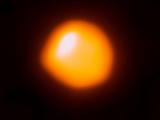
|
05/12/2023
On the night of 11-12 December, the star Betelgeuse will disappear... for a few seconds At around 2:15 in the early hours of 12 December, the asteroid Leona will pass in front of the red supergiant star Betelgeuse, a very unusual event that will be visible to the naked eye. The Institute of Astrophysics of Andalusia (IAA-CSIC) has organised a campaign to observe the phenomenon, which will make it possible to study both the asteroid and the star's atmosphere |
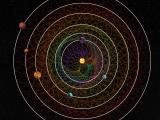
|
29/11/2023
A cosmic dance reveals a system of six planets The Institute of Astrophysics of Andalusia (IAA-CSIC) participates in the discovery of a sixfold system with synchronised orbits, whose configuration shows that it has remained unchanged since its formation more than a billion years ago. The result has been possible thanks to an international collaboration with data from the CHEOPS (ESA) and TESS (NASA) satellites, as well as from the CARMENES instrument at Calar Alto Observatory |
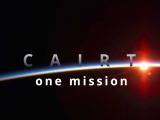
|
23/11/2023
The IAA-CSIC prepares for groundbreaking climate research from space The CAIRT mission, in whose scientific design the Institute of Astrophysics of Andalusia (IAA-CSIC) has participated, is among the two proposals selected by the European Space Agency (ESA) to move on to Phase A of the Earth Explorer 11 programme. CAIRT aims to study how the Earth's atmosphere reacts to climate change |
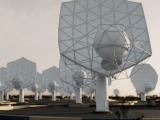
|
21/11/2023
The IAA-CSIC tackles the computational challenge of the SKA Observatory to study the birth of the first stars Together with two other CSIC centres, it has contributed its experience in big data to tackle one of the remains of the future observatory, which will investigate the phase of the Universe in which stars were formed. The SKA Observatory, the largest scientific infrastructure planned to date, is an international effort to build the world's most powerful radio telescopes |

|
29/02/2024 - 12:30
SO Colloquium: Eyes on the Invisible: Charting New Horizons with the Event Horizon Telescope The Event Horizon Telescope (EHT) collaboration has captured the first-ever image of a black hole's event horizon in the galaxy M87, and more recently, in the supermassive black hole at the center of our Milky Way, SgrA*. These images, consistent with Kerr black holes as described by General Relativity, provide the strongest evidence to date for the existence of supermassive black holes in galaxy nuclei. Notably, the first polarization images of... Dr. Avery Broderick |